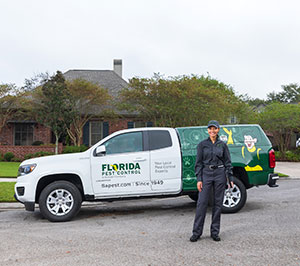Top Quality A1 Pest Control Services Charlotte - Protect Your Home
Top Quality A1 Pest Control Services Charlotte - Protect Your Home
Blog Article
Bed Insect Therapy Break Down: Contrasting Chemical Vs. Non-Chemical Solutions
In the world of pest control, especially when managing the relentless issue of bed insects, the selection in between chemical and non-chemical therapy services can be an essential one. Both strategies supply distinct advantages and disadvantages, influencing elements such as efficiency, security considerations, and overall expense. By examining the nuanced details of each method, a clearer understanding of which path to seek in addressing a bed bug invasion can be obtained.
Performance of Chemical Therapies
Chemical therapies for bed pest problems have actually been extensively identified for their powerful and rapid efficacy in removing these parasites. When considering the effectiveness of chemical treatments, it is vital to recognize that they can supply a detailed and fast option to a bed insect issue. Professional pest control specialists commonly depend on pesticides to target bed pests at different phases of their life process, including nymphs, adults, and eggs. These chemicals normally function by disrupting the bed bugs' nerves, leading to paralysis and eventual death.
Additionally, chemical treatments have the benefit of offering recurring effects, meaning that they can proceed to remove bed insects also after the initial application. This residual action is particularly beneficial in combating any kind of prospective re-infestations. Additionally, the fast action of chemical treatments can bring alleviation to individuals facing extreme bed pest infestations, enabling them to regain control of their home quickly.
Safety Interest In Chemical Solutions
When making use of chemical services for bed pest therapy is ensuring the safety of occupants and the environment,One important element that needs cautious factor to consider. While chemical therapies can be effective in eliminating bed pests, they may posture threats if not taken care of properly. Among the main safety and security interest in chemical options is the potential damage they can create to human health and wellness. Direct exposure to specific chemicals made use of in bed insect therapies can lead to respiratory problems, skin irritability, or other negative responses, especially in individuals with pre-existing problems or level of sensitivities. Additionally, incorrect application or dosage of chemical pesticides can lead to harmful deposits sticking around in the treated location, presenting long-term wellness dangers to occupants.
Moreover, the ecological impact of chemical remedies is another substantial consideration. Some chemicals utilized in bed bug treatments might be harmful to useful pests, wild animals, and ecological communities if they leach into the soil or water supply. It is necessary to use chemical treatments carefully, following security standards, and thinking about much less harmful alternatives to alleviate these risks and make certain the risk-free and effective management of bed insect invasions.
Benefits of Non-Chemical Approaches
Thinking about the possible security problems and environmental impact connected with chemical options for bed pest treatment, exploring non-chemical methods presents an encouraging alternative with numerous distinctive benefits. Non-chemical therapies are environmentally pleasant, as they do not add to air or water air pollution, making them a lasting option for pest control.
Additionally, non-chemical remedies can be efficient in targeting bed pests, consisting of hard-to-reach areas where chemical therapies may not pass through. Techniques such as warm treatment, vacuuming, steam cleansing, and cushion coverings offer thorough eradication without using dangerous chemicals. Additionally, non-chemical strategies can be less turbulent, calling for very little prep work and permitting quicker reentry right into treated areas. Overall, opting for non-chemical bed bug therapy techniques not just focuses on security and environmental management however likewise guarantees reliable and comprehensive pest control.
Limitations of Non-Chemical Treatments

Furthermore, non-chemical therapies commonly call for several applications to achieve successful obliteration. This can be lengthy and may not constantly guarantee complete removal of all bed bugs and their eggs, especially in hard-to-reach or hidden places.
Moreover, the success of non-chemical treatments heavily depends on appropriate execution and thoroughness, which can be challenging my site for individuals without expert know-how. Poor application of non-chemical approaches might result in incomplete obliteration, resulting in consistent problems and the need for extra therapies.
As a result, while non-chemical treatments have their benefits, it is necessary to acknowledge these restrictions and consider them when figuring out one of the most reliable strategy for handling bed insect invasions.
Cost Comparison: Chemical Vs. Non-Chemical Options
Provided the constraints connected with non-chemical treatments, a vital element to review in the context of bed pest management is the cost comparison in between chemical and non-chemical choices. Chemical therapies normally entail the application of pesticides by professionals, which can vary from $250 to $900 per space, depending on the intensity of the infestation and the dimension of the area to be treated. In comparison, non-chemical treatments like warm treatment or steam can be a lot more expensive, with prices varying from $1,000 to $6,000 for a whole home. While the preliminary price of chemical treatments may appear lower, multiple therapies might be called for to totally remove the invasion, possibly increasing the total price. On the other hand, non-chemical choices might provide a much more sustainable and eco-friendly option, although they can be cost-prohibitive for some individuals. Eventually, when thinking about the expense of bed pest treatment options, it is necessary to weigh the upfront expenditures versus the effectiveness and long-lasting sustainability of the picked approach.
Final Thought

Taking into consideration the potential security worries and ecological influence connected with chemical options for bed bug therapy, exploring non-chemical techniques presents an appealing alternative with numerous distinctive benefits.Offered the restrictions associated with non-chemical treatments, an essential element to evaluate in the context of bed bug monitoring is the expense comparison in between chemical and non-chemical alternatives. In contrast, non-chemical treatments like warm company website treatment or heavy steam can be a lot more costly, with expenses varying from $1,000 to $6,000 for a whole home. While the preliminary expense of chemical therapies might appear lower, multiple therapies might be required to fully get rid of the invasion, possibly raising the general price.In verdict, when comparing chemical and non-chemical bed insect treatment options, it is necessary to think about effectiveness, safety, benefits, limitations, and price.
Report this page